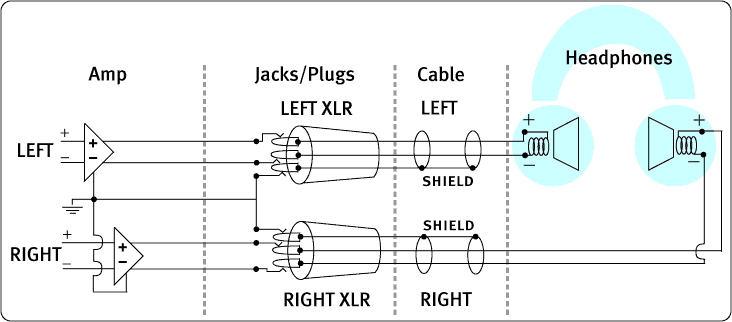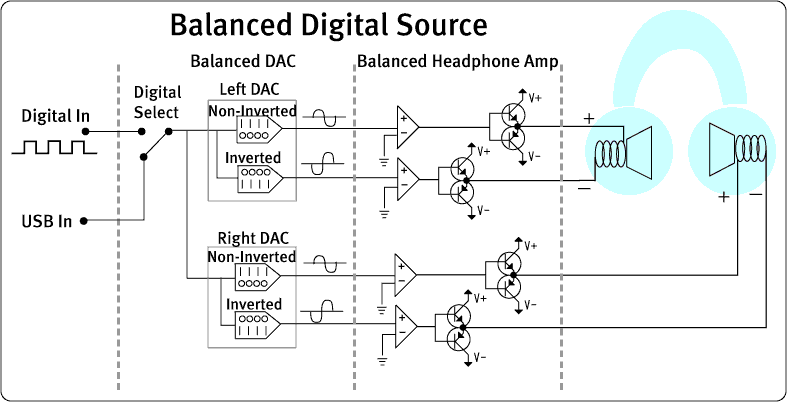Unlocking the Power of Balanced Headphones: A Comprehensive Guide
Introduction
How do you listen to your favorite songs? Depending on your audio setup, you might not be hearing them as the artist intended. That's where balanced headphones come in. This article takes an in-depth look at what balanced headphones are, the technology behind them, and why they are a game-changer for audiophiles. Let's dive in and unleash the power of balanced audio.
What Are Balanced Headphones?
At their core, balanced headphones are a specialized type of audio tool that significantly elevates the sound quality by skillfully eliminating external disturbances. Here's how they work:
- Dual Audio Signals: Balanced headphones boast a superior audio transmission methodology. They transmit two distinctive types of audio signals: positive and negative, separately assigned to each audio channel namely left and right.
- Signal Balance: Thanks to this dualistic transmission, each channel gets furnished with equal but out-of-phase signals, ensuring a harmoniously balanced audio output.
- Connector Variety: Unlike your everyday headphones that rest on a single-ended connection, balanced counterparts have a distinct edge. They use a different connector setup involving four wires, each equipped with a unique role to play.
- Fine-Tuned Audio: This cutting-edge setup supports better disentanglement of individual sounds resulting in a more refined audio experience.
In a nutshell, balanced headphones are a high-tech marvel for audiophiles who crave for sound in its purest form. Their enhanced transmission process cuts through the noise and allows listeners to experience music as it was intended to sound.
How Do Balanced Headphones Work?
Understanding the functionality of balanced headphones can initially seem complex, but when broken down, the basic principle behind them is fairly simple:
- Each balanced headphone is equipped with a special balanced cable, inclusive of two conductors and a ground wire.
- Each of these conductors carry the same audio signal, but interestingly, in reversed polarity.
- When the out-of-phase signals meet at the headphones, any noise which has been picked up on the journey, and which is in-phase, is effectively cancelled out. This cancellation process falls under the concept of 'Common Mode Rejection'.
- Another key aspect is the doubling of signal voltage. With two conductors used for each audio channel instead of one, there is a doubling of signal voltage, which in turn leads to a higher power output and an enhanced signal-to-noise ratio.
- The outcome of this sophisticated process? Audio delivered with significantly less distortion and greater detailed quality.
These fundamental operational aspects significantly elevate the performance of balanced headphones over their regular counterparts. The technology and design of these impressive headphones empower them to effectively combat distortion and deliver incredibly pure sound delivery. Summarizing, balanced headphones work by cancelling out in-phase noise inputs and doubling the signal voltage to enhance your audio experience.
What Sets Balanced Headphones Apart from Regular Headphones?
Balanced headphones are set apart from traditional headphones in several noteworthy aspects. Here’s a breakdown of what distinguishes them:
1. Wiring Structure:
- Traditional Headphones: Usually have three wires, and share a common ground for both audio channels.
- Balanced Headphones: Feature a distinct, more complex wiring system—often, four wires. This isolates the left and right audio channels, effectively averting any possible cross-talk interference.
2. Noise and Distortion Elimination:
- Traditional Headphones: Suffer from potential interference, background noise, and dispersion that can distort the audio.
- Balanced Headphones: The balanced configuration aids in eradicating unwelcome noise and distortion. This is accomplished by nullifying the noise signals picked up along the cable, leading to a purer, clearer sound delivery.
3. Driving Power:
- Traditional Headphones: Limited driving power.
- Balanced Headphones: Capable of providing a more potent driving power, beneficial when paired with high-end, hard-to-drive headphones.
In conclusion, balanced headphones surpass their traditional counterparts through their intricate wiring, superior noise cancellation, and powerful driving capabilities. For a serrated listening experience, free from background noise and distortion, balanced headphones make a compelling case.
Why Choose Balanced Headphones? Exploring the Benefits
Balanced headphones indeed come with numerous attributes that make them a tempting choice for any audio enthusiast. Below are some significant benefits that make them worth considering:
1. Superior Sound Quality: The primary advantage of balanced headphones is that they deliver a remarkably pure and fuller sound profile. Every note and instrumental detail in the audio track becomes more distinct, providing an enhanced listening experience.
2. Less Noise, More Clarity: Armed with a noise-cancelling feature, balanced headphones dramatically reduce the amount of distortion and background noise. The result is undisturbed, crystal-clear audio, allowing you to immerse fully in your favorite tracks.
3. Improved Stereo Imaging: Balanced headphones output audio separately for each ear. This separation presents a more detailed and extensive soundstage and improves stereo imaging. This ensures a lifelike and immersive sound experience that's close to being in a live performance.
4. High Driving Power: With a higher signal voltage, balanced headphones comfortably drive high-impedance headphones, offering optimal performance even with demanding audio equipment. This feature ensures you enjoy the full spectrum of your high-end headphones.
By considering these benefits:
* For ordinary listeners, the higher cost of balanced headphones might not provide noticeably better audio quality.
* However, for audiophiles and sound professionals who cherish every detail and nuance of the audio, the investment in balanced headphones is worthwhile. They can provide an in-depth, immersive audio experience that transforms every listening session into an unforgettable event.
Are Balanced Headphones Worth the Investment?
Balanced headphones do command a higher cost than their standard counterparts, but are they worth the added expense? Let’s dissect the factors to consider:
- Audience: The answer largely depends on one's audio preferences and listening habits. For casual listeners, the added expense might not translate to a noticeable difference, especially when listening to lower bitrate files from a standard music player.
- Perceived Value: For detail-focused audiophiles and professionals who value high-definition sound, the additional cost for balanced headphones can be a worthwhile investment. They often appreciate the ability of balanced headphones to extract the subtlest details in high-definition audio tracks, offering an unparalleled auditory experience which standard headphones often can't match.
- Quality of Audio Setup: Balanced headphones, in synergy with high-end audio equipment, can significantly uplift the sound output. On the flip side, if your existing audio setup or source isn’t up to par, investing in balanced headphones may not yield the desired improvement in sound quality.
- Long-term Usability: Balanced headphones generally last longer due to their robust build and high-quality materials. Therefore, despite the initial high cost, they could offer more value over time.
- Sound Quality: The improvements in sound quality with balanced headphones are significant. This aspect alone can be a deciding factor for many audio enthusiasts. Less distortion, broader soundstage, and an immersive listening experience make them stand out.
In essence, the decision to invest in balanced headphones hinges primarily on your audio priorities, existing setup quality, and your listening demands. Real enthusiasts who value superior sound and longevity would find balanced headphones to be a sound investment.

Conclusion
Unlocking the true power of music lies in the quality of your audio equipment. Balanced headphones offer an upgrade, providing an elevated listening experience with less noise, more depth, and a wide spectrum of unrivaled sound quality. For those who appreciate the intricacies of sound, balanced headphones are certainly worth considering.

Related FAQs about what are balanced headphones
What are the key differences between balanced and unbalanced headphones?
The main differences between balanced and unbalanced headphones lie in their wiring structure and sound delivery. Balanced headphones have a more complex wiring system with separate grounds for each channel. This enhances their ability to reduce noise and distortion. Unbalanced headphones have a common ground for all channels, making them more susceptible to noise interferences.
How do the technical elements of balanced headphones contribute to better sound quality?
Balanced headphones' technical elements, such as dual audio signals and distinct wiring, contribute to better sound quality by reducing noise and distortion. By delivering out-of-phase signals, they effectively cancel out noise along the cable. Plus, the isolated channels on balanced headphones can minimize cross-interference, ensuring a clearer sound.
Are balanced headphones suitable for all types of listening or specific genres?
Balanced headphones are suited to all types of listening as they improve the overall audio quality, regardless of genre. Whether you're tuning in to classical music or heavy metal, balanced headphones deliver a clear, immersive audio experience with reduced distortion and noise. Hence, they are universal in their applicability.


